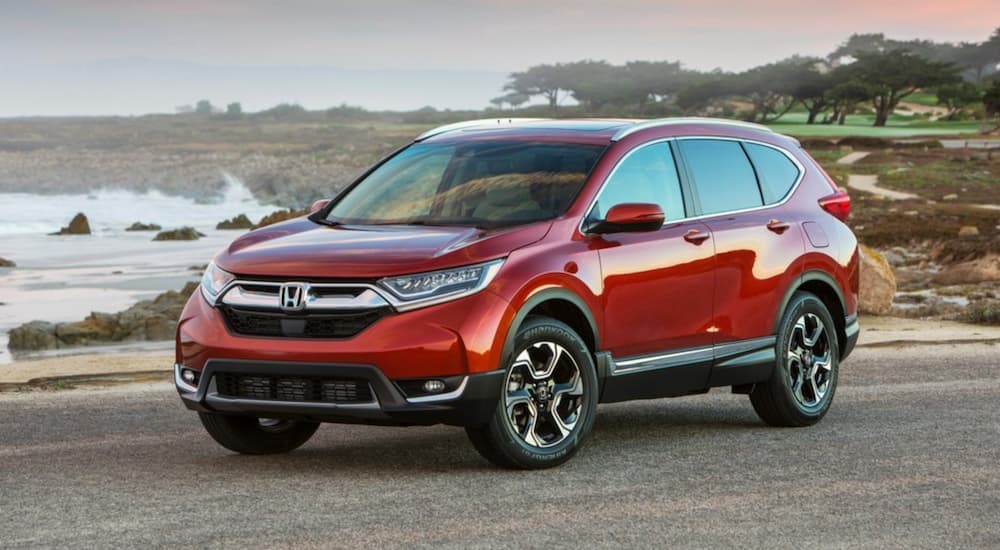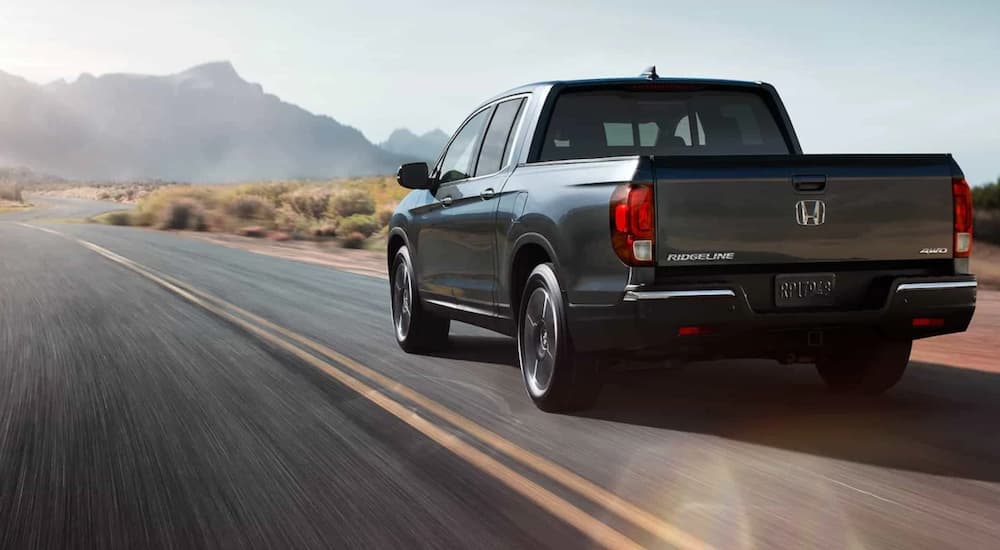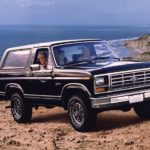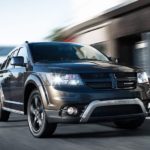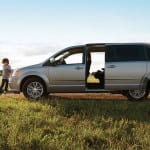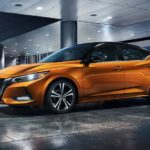If you’ve been looking at used SUVs for sale, you certainly have your pick. Since the 1990s, the SUV market has expanded, introducing some unique characters, some you might have never heard of. When it comes to Honda, the company made no secret that they believed the SUV trend would eventually die down, so while they waited, they turned to other companies and did what the industry calls “rebadging.”
After it became clear SUVs weren’t going anywhere any time soon Honda did what they did best; designed some of the most unique and useful vehicles on the market, some you might have heard of and some you haven’t. Next time you’re prowling used car lots take a second look because that old Honda that looks like a Land Rover might very well be just that.
At a Crossroads
Rebadging occurs when one car model is sold by two different car companies, each under a different name. Sometimes it’s done to improve sales or introduce a vehicle in a foreign market. In Honda’s case, they were so sure the SUV trend would eventually peter out that instead of investing their engineering into designing their own SUV model they rebadged the Land Rover Discovery as the Honda Crossroad. The four-wheel drive of the Discovery gave Honda an edge in the market over competitors like Toyota and Nissan, who dominated the SUV market at the time.
But just because it says Honda doesn’t make it so. The Rover Discovery had mechanical issues which carried over to the Crossroad, prompting several recalls that made Honda reconsider using the model. The Crossroad was quickly set aside for Honda’s own SUV, the CR-V, which hit the market in 1996.
A Passport Into the Growing American SUV Market
The renamed Crossroad wasn’t the only rebadged SUV Honda sold in the 90s. At the same time the Crossroad was being introduced in markets like Japan and New Zealand, a rebadge of the Isuzu Rodeo was renamed and sold as the Honda Passport. The trade was an even deal since Isuzu needed a van for their lineup, so Honda traded their Odyssey minivan (renamed the Isuzu Oasis) for the Rodeo/Passport in order to keep up in the SUV and truck market that was consistently growing in America during the 1990s.
The Honda Passport didn’t do as well as expected, considering its tough competition from domestic and import car brands. By the mid to late 90s, Honda discontinued the Passport, with the Isuzu Oasis following suit. But that wasn’t the end of Isuzu and Honda’s rebadging relationship.
To make a dent in the Japanese and American markets, Honda scooped up the Isuzu Trooper, a large 4-door SUV. The Trooper was called the Honda Horizon overseas and sold in America as the Acura SLX. The Trooper (or Acura SLX) didn’t stand out in the market due to other versions of the Trooper were also rebadged by names like Chevy and Holden because of Isuzu operating under the General Motors name.
In Its Element
Honda’s rebadged SUVs failed to take off because, in the end, they lacked the innovative engineering they were known so well for. So naturally, the market was thankful when Honda finally decided to get in on the action and build its own line of SUVs and crossovers. While the CR-V is one of the brand’s most popular models, Honda has also tried its hand over the years at a few oddball vehicles, one being the cube-like Honda Element. Released in 2003, the Honda Element stood out among other SUVs mostly because of its very square shape and unique colors like Citrus Fire Metallic, Kiwi Metallic, and Fiji Blue.
Instead of deciding between a 2-door or 4-door style, the Element was designed with retro half rear-swinging doors that added to its eye-catching appearance. Honda designed the Element to appeal to young active drivers, equipped with a removable cooler, waterproof flooring, and plenty of cargo space for drivers looking to go on road trips.
If the Element wasn’t quirky enough, it offered options like the dog-friendly package, which was available for the last few years of production. Because the Element was modeled as a social and active vehicle, Honda took note that drivers were probably also dog lovers. The dog-friendly package added a dog kennel with webbing designed to keep dogs safe in case of a collision. Also included in the package were soft floors, a fan, and a spill-resistant water bowl. Mats and upholstery completed the package with dog theme patterns like bones or paws.
A Journey to the Ridgeline
Have you seen the Honda Ridgeline? It looks like a truck, doesn’t it? But lurking underneath the body of a pick-up is the frame of an SUV, a Honda Pilot frame, to be exact. The Ridgeline is a truck for people who might prefer an SUV but need a truck for practical purposes, driving more like an SUV than a mid-size truck. What also makes the Ridgeline a great truck option is that it’s considered one of the best when it comes to a reliable used truck.
Introduced in 2006 as Honda’s answer to rivals Toyota and Nissan, the Ridgeline’s unibody and block-like styling helped the truck stand out in the diverse market. The Ridgeline had a focus on comfort and handling, making hauling more convenient with its 8.5 cu ft locking trunk built into the truck bed to stow loose items. To add to its unique features, drivers could choose between front-wheel or all-wheel drive, something not often seen in the pickup truck market.
Why not buy the Pilot, then? Well, first off, the Ridgeline leads the market when it comes to mid-size trucks. Plus, the Ridgeline offers a versatile truck bed that can be useful in an abundance of ways. While it may not be the toughest truck when it comes to heavy hauling and towing, the Ridgeline picks up the slack where a Pilot couldn’t. If drivers are looking for an SUV but need the space of a truck, they can pick up a used Ridgeline that offers all of Honda’s great engineering and quirky design without the heavy price tag of a new vehicle. When drivers choose a Ridgeline they get the roominess, handling, and fuel economy of an SUV with the utility and power of a pickup. That’s not something a lot of trucks can claim.
A Honda by Any Other Name…
Whether a Honda is quirky, sleek, or somewhere in between, there’s no mistaking a Honda when you drive one, hence why the rebadging didn’t go over as well as the manufacturer would have liked. When you think about it, what is a Honda without its top-of-the-line engineering? So if you’re in the market for a quality used SUV you can’t do better than one of their signature models. If you look hard enough, you even might find that the SUV you’re looking at isn’t a Honda at all, or maybe it’s unlike anything you’ve encountered on your hunt for the perfect SUV. The brand has always excelled at keeping drivers guessing as to what will come next.
Maybe you’ll find a boxy Element equipped with a dog bed or come across Honda’s Acura ZDX, which was created as a sports coupe crossover but was designed so that the bottom was heavy and the roof so low that cargo space was less than desirable. You may come across one of the first Ridgelines; instead of overlooking it in favor of an SUV. With so many hidden gems in plain sight, drivers never know what they’re going to discover when they prowl the used car lots for a Honda.
